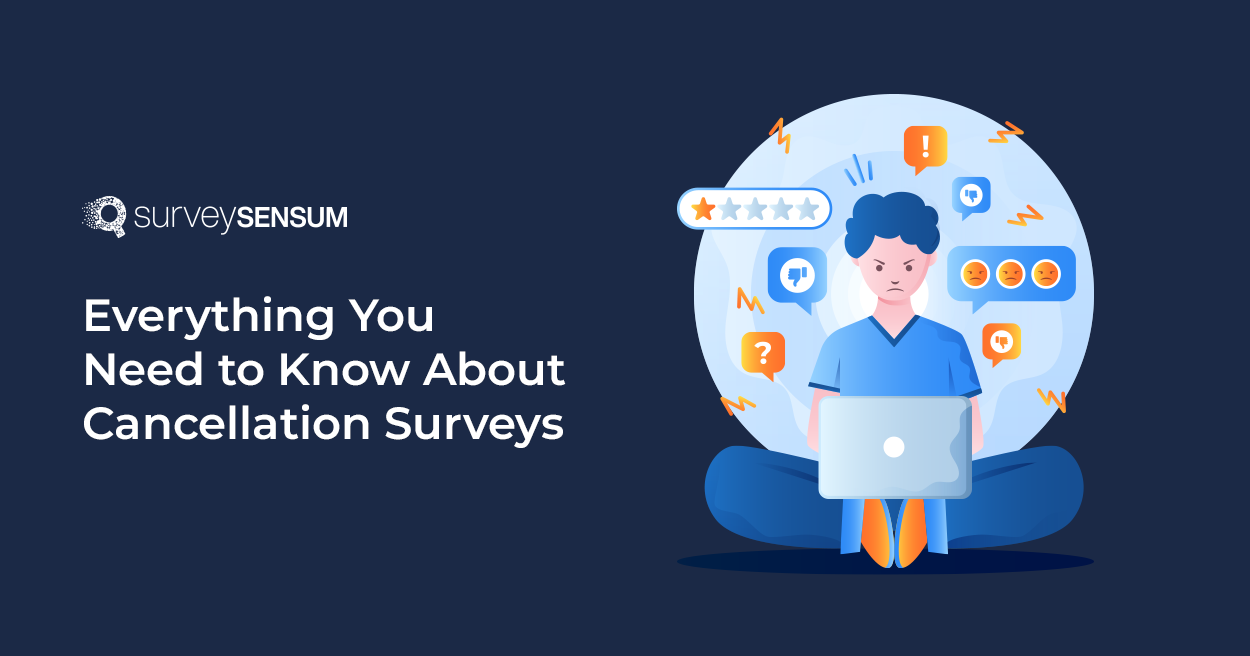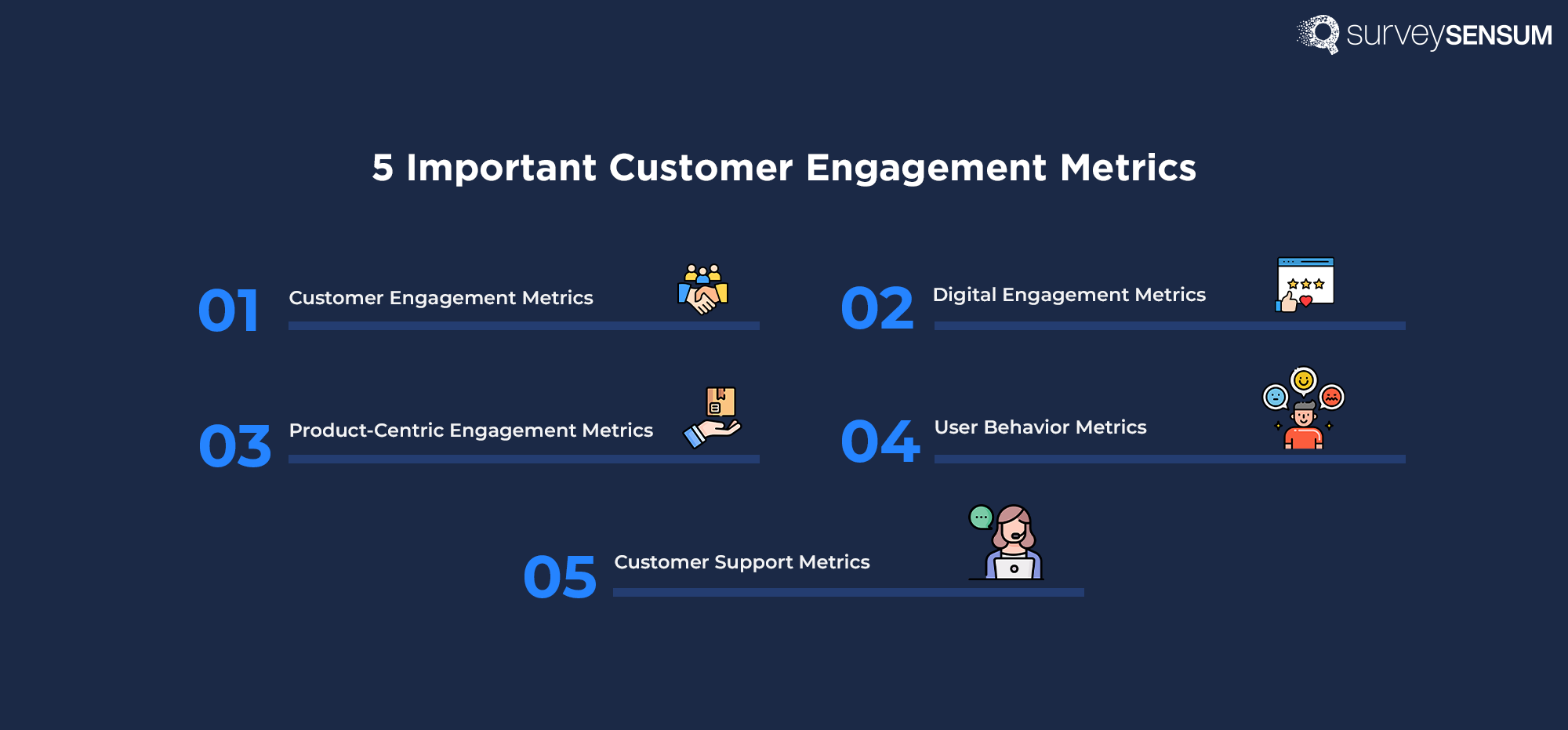9 Ways to Improve NPS Response Rates
Read More

Well, this has been a challenge faced by many companies. After putting so much effort into getting them onboard, they leave. Yes, this hurts like a breakup!
But fret not; there is one thing you can do!
Launch cancellation surveys – a smart way to find out why customers say goodbye, but in a friendly and helpful way.
A cancellation survey is a set of questions sent to users to determine why your customers are leaving. The feedback from these surveys will help you prevent customer churn or resolve the issue from the core so that no one else jumps ship for the same reason.
Ideally, this survey will immediately pop up when the user clicks the cancel button.
It usually starts with a simple question: “Why are you leaving?” But it doesn’t end there – businesses listen and come up with new ideas to convince customers to stay. It’s like changing a “see ya” into a “let’s give it another try.”
But, why bother with all this? Well, research says that businesses can win back 70% of dissatisfied customers when their issues are resolved.
Now, you might wonder, “How can cancellation surveys save your customers from leaving?”
Let’s talk about that and more in this blog – from using them to reduce customer churn to asking the perfect survey questions. We’ll also discuss how you can harness the power of a robust customer feedback platform to create and analyze effective cancellation surveys.
But first, you need to know the amazing benefits of this survey.
So, let’s get started, shall we?
Customer feedback gathered from cancellation surveys can be a game-changer for your business, bringing many benefits beyond just understanding why customers leave. Let’s explore the key advantages of incorporating cancellation surveys into your strategy:
1. Pinpointing Key Improvement Areas: Ever wondered why customers leave? With cancellation surveys, you can identify specific pain points in your product, pricing, or customer service that drive churn. It’s like having a map of the treasure of improvement opportunities.
2. Understanding Customer Needs and Preferences: Get real, actionable insights into what they value and how they use your service. This isn’t just data; it’s the golden key to customer satisfaction. Happy customers stick around, right?
3. Reducing Churn and Improving Retention: Knowledge is power, my friend. Armed with insights from cancellation surveys, you can make strategic changes to prevent future cancellations.
4. Winning Back Lost Customers: Do you also wish to have a second chance? Well, here it is. With personalized incentives or targeted improvements based on specific feedback, you can win back customers who slipped through your fingers.
5. Staying Ahead of the Competition: Cancellation surveys aren’t just about your customers; they’re about your competitors too. By understanding why customers choose a competitor, you can identify specific features, pricing models, or service aspects that attract them.
You see, these cancellation surveys can be beneficial for your business! Launch customer cancellation survey with SurveySensum!
Now, let’s look at some of the best practices for gathering cancellation surveys.
Crafting a cancellation survey that customers not only complete but also find valuable is key to understanding their reasons and improving your services. Here are some user-friendly cancellation survey best practices that can make a significant difference

Trigger surveys immediately after a cancellation request to capture real-time feedback. Furthermore, an in-app customer cancellation survey simplifies the process of winning them back by increasing the chances of participation and ensuring that customers recall their experience accurately.
Respect your customers’ choices! Provide an opt-out option for those who prefer not to participate in the survey. This shows consideration for their time and preference, contributing to a positive customer experience.
Experiment with different survey formats to find the most effective approach. A/B testing can help you discover the survey type that resonates best with your audience, whether it’s a simple or more interactive format.

Avoid overwhelming customers with lengthy surveys. Keep questions concise and to the point, making it easy for users to breeze through the survey without feeling burdened.

Combine multiple-choice, open-ended, and Likert scale questions for a comprehensive view of user feedback. This makes the survey more engaging and provides you with a richer set of data to analyze.

Tailor questions to the specific service and potential reasons for cancellation. By asking targeted questions, you’re more likely to receive insightful responses that can guide your efforts to enhance customer satisfaction.
Ensure your questions guide users toward providing actionable feedback. Instead of vague inquiries, ask about specific features, experiences, or aspects of the service that can be addressed and improved upon. This targeted approach facilitates strategic decision-making.
Implement a user-friendly survey interface that is easy to navigate. Additionally, it provides flexibility by allowing users to complete the survey through various channels, including web forms, email links, or even phone interviews. This accommodates diverse user preferences and accessibility.
Thank them for their feedback and share how you plan to address their concerns. Follow up with an exit interview to gain more valuable insights. Closing the feedback loop is crucial. Express gratitude to users for their input and, more importantly, communicate how their feedback is utilized for improvements.
Choose a user-friendly survey platform that works well on various devices. Ensure the survey is easy to navigate, enhancing the overall user experience.
Send the survey at an appropriate time, such as immediately after cancellation, during the cancellation process, or shortly after the end of the billing cycle. Choose a timing that aligns with your service model and customer behavior.
→ Learn the Best Time to Send the Survey
Send Surveys at the right time with SurveySensum.
Don’t stop at feedback – leverage the insights gained to re-engage with churned users. Implement win-back emails that offer targeted incentives or improvements based on their reasons for leaving. This personalized approach showcases a commitment to addressing concerns and can be a powerful strategy for customer retention.
For example, if a customer has a pricing issue, send them an email with a discount. If they say they’re trying a different product, you can ask them about it. And if they mention closing their business, you can email them your services will be here for them if needed. These messages help keep the talk going and allow you to help your customers even more.
The benefits of cancellation surveys are quite a lot, aren’t they? But, you gotta know the right questions to ask your customers.
Crafting effective cancellation survey questions is essential to gather valuable insights from users who decide to cancel your service. Here’s a set of thoughtful questions to include in your cancellation survey:
What made you cancel your subscription?
Purpose: Your focus here is uncovering the primary reason behind your cancellation. This open-ended question allows you to express your specific concerns or motivations, providing a qualitative understanding of your decision.
Is there something specific we could have done to retain you as a subscriber?
Purpose: Using a direct approach, this question seeks actionable customer insights helping you understand their expectations. Asking if there were alternative actions you could have taken opens the door for valuable suggestions or highlights areas where improvements could have influenced their decision to stay.
Did you explore other subscription alternatives before canceling? If yes, which ones?
Purpose: Understanding if you explored alternatives offers insight into your product’s competitive landscape. This question helps identify specific competitors or alternative solutions that might appeal more to you, contributing to strategic market positioning.
Were there any product features you expected but did not find?
Purpose: Delving into specific product expectations, this question encourages customers to reveal anticipated features that may have been absent in your offering. The insights gathered here inform future product development and enhancement strategies.
On a scale of 1 to 10, how likely are you to reconsider using our product in the future? (1 being not likely at all, 10 being extremely likely)
Purpose: Quantifying the likelihood of the customer returning in the future is the aim here. The numerical scale provides a measurable metric, making it easier to gauge overall sentiment and track changes in customer’s willingness to reconsider your product.
But just asking the right question is not enough! Choosing the perfect moment for sending these surveys is equally crucial. Let’s find out the right moment for sending cancellation surveys.
Deciding when to roll out cancellation surveys is a strategic move that can make a real difference in gaining valuable insights and bringing back customers who have decided to part ways.
Let’s break down two primary options – in-app, real-time surveys, and email surveys after cancellation – along with their pros and cons:

Launch In-app surveys with SurveySensum for FREE!

You must have figured out why customers unsubscribe from your business by now. Not yet? Let’s discover why customers churn and how you can make them stay!
Alright, let’s dive into the reasons customers decide to part ways with our services and some practical steps to win them back:
So, keeping communication open, addressing issues promptly, and continuously refining the service based on customer feedback should be our playbook for winning back those who’ve decided to take a break.
Now, let’s have a look at what some of the renowned CX experts have to say about the cancellation surveys.
During a recent discussion on the Customer Experience Question of the Day (CXQOTD), Jeremy Watkin from Number Barn shared his insights on learning from customers who cancel their service.
To understand their experiences better, he conducted a customer effort survey. The responses revealed a spectrum of feelings, with some customers expressing dissatisfaction with the process, while others indicated a possibility of returning in the future.
Jeremy proposed three strategies for extracting insights from customers who have decided to cancel their service:
The journey to reduce customer churn is paved with valuable insights, and cancellation surveys emerge as the guiding light. By understanding the reasons behind cancellations, businesses can transform setbacks into opportunities for growth and improvement.
Amplifying your retention efforts becomes even more seamless with a robust customer feedback tool like SurveySensum.
This advanced platform allows you to craft personalized questionnaires, streamlines the survey process, and enhances the analysis of customer feedback. Its advanced features allow businesses to delve deep into the nuances of responses, uncovering patterns and trends that might have gone unnoticed.
